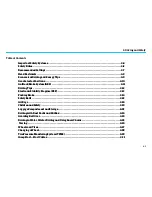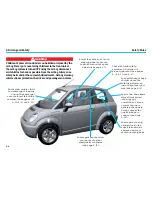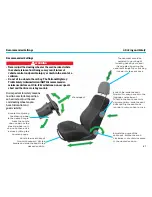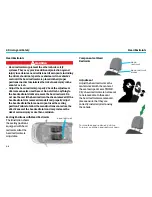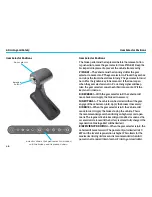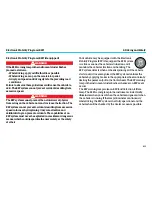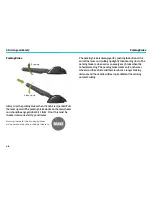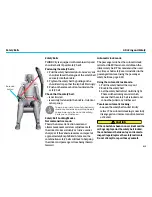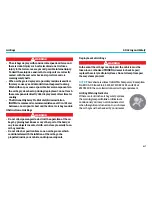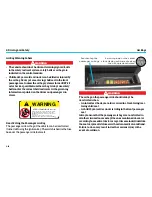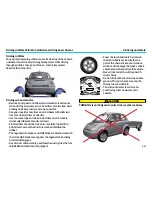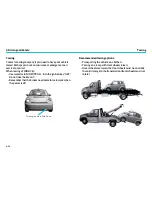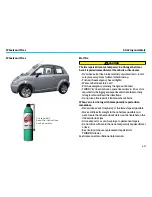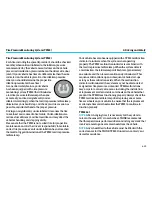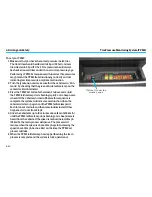
4. Driving and Safety
4-17
Air Bags
! WARNING
• The air bags deploy with considerable speed and force and
there is risk of injury such as facial abrasions, fractures,
injury to the facial area or eyes and possible internal injury.
To limit these injuries, ensure that occupants are correctly
seated, with the seat as far back as is practical, and are
wearing safety belts.
• When air bags are deployed, a powdery residue is emitted;
this may cause eye and skin irritation if exposed too long.
Wash with soap as soon as possible. Several components in
the air bag system heat up during deployment; do not touch
these components directly after deployment, allow time for
cooling.
• The National Highway Traffic Safety Administration
(NHTSA) recommends a minimum distance of 10 in. (25 cm)
between an occupant’s chest and the driver’s air bag module.
Obstruction of Air Bags
! WARNING
• Do not allow passengers to obstruct the operation of the air
bags by placing feet, knees or any other part of the body, or
any loose objects in contact with, or in close proximity to, an
air bag module.
• Do not attach or position items on an air bag cover, which
could interfere with the inflation of the air bag or be
propelled inside your vehicle and injure occupants.
Deployment of Air Bags
! WARNING
In the event the air bags are deployed, the vehicle must be
taken to an authorized THINK NA dealer to check/repair/
replace the safety restraint systems. Do not attempt to repair
these systems yourself.
NOTE:
This vehicle is subject to NHTSA Temporary Exemption
No. EX 09–02, from S14.5.2, S15, S17, S19, S21, S23, and S25 of
FMVSS 208; the so-called advanced air bag requirement.
Air Bag Warning Indicator
If there is a fault in the air bag safety system,
the warning lamp will blink or illuminate
continuously or it may not illuminate at all
when the ignition is turned on. In such cases,
the air bag must be checked by your dealer.
Summary of Contents for think city
Page 1: ...THINK City USER MANUAL...
Page 2: ......
Page 8: ...1 Get to Know Your THINK City 1 2...
Page 26: ...2 Overview of Instruments and Controls 2 2...
Page 38: ......
Page 40: ...3 Climate Controls 3 2...
Page 48: ......
Page 50: ...4 Driving and Safety 4 2...
Page 80: ......
Page 82: ...5 Service and Maintenance 5 2...
Page 104: ......
Page 106: ...6 Specifications and Technical Data 6 2...
Page 114: ......
Page 116: ...7 Reporting Safety Defects 7 2...
Page 117: ...7 Reporting Safety Defects 7 3 Table of Contents ReportingSafetyDefects 7 4...
Page 119: ...8 Index...
Page 123: ......

